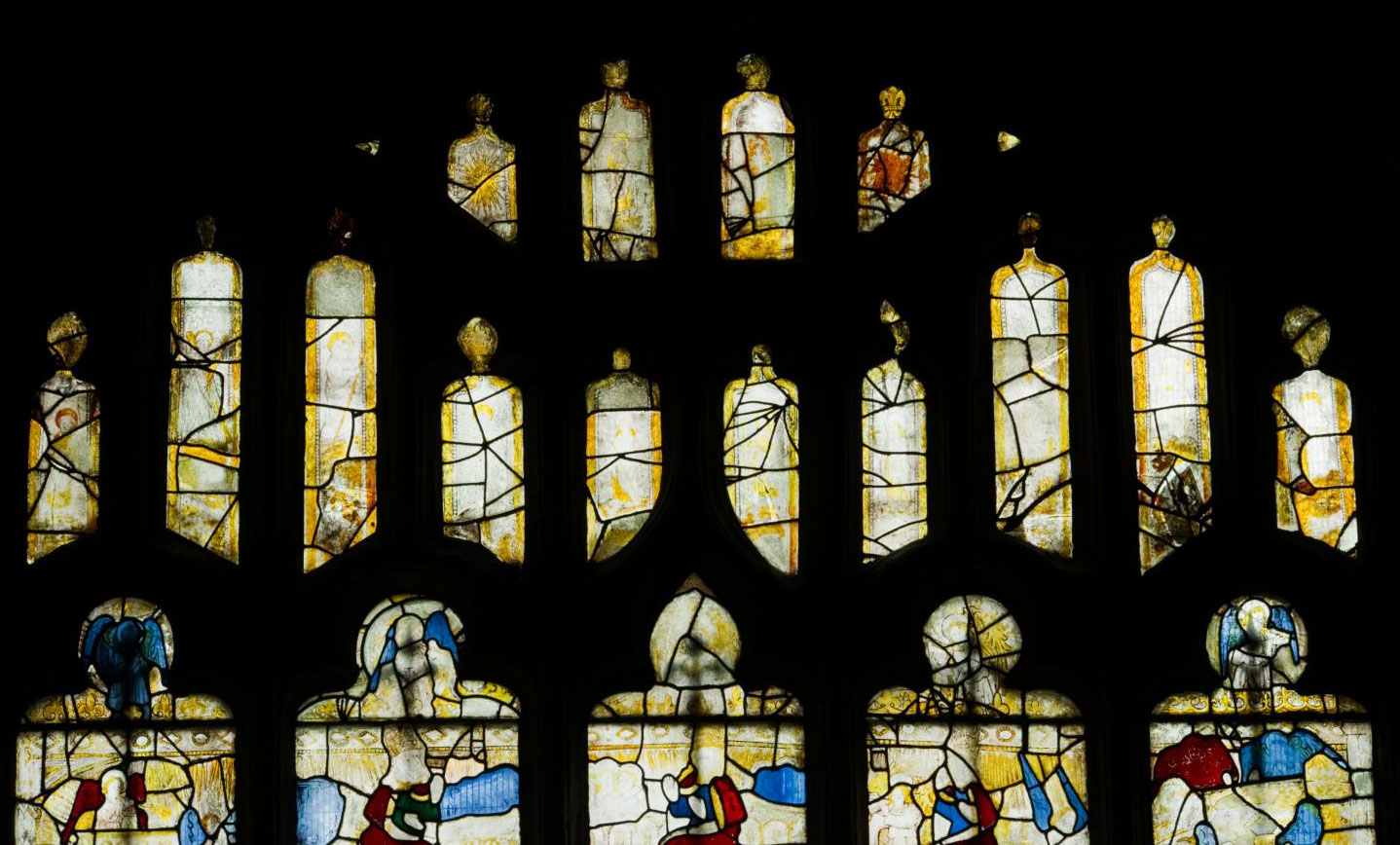Dealing with Environmental Deterioration of Stained Glass
By Robyn Pender, Senior Architectural Conservator, Historic England
Stained glass is one of the primary methods of embellishing architecture, and is not only beautiful, but can tell historians a great deal about a building’s history.
Unfortunately its survival can be precarious. Windows are also a critical part of a building’s function, which is keeping out the weather. Rain and wind beat against them, corroding glass and metal and causing structural deformation. Since the temperature of glass and metal changes very easily, windows often suffer from condensation; and this can be a serious problem if the building is damp or has poorly designed heating. Add to this vulnerability to projectile damage, and it’s clear that its environment is the key cause of stained-glass deterioration.
Evaluating environmental problems requires expertise in glass conservation, and the conservator will have to work closely with the building’s architect or surveyor to understand root causes. These can be hard to identify, especially where the problem is intermittent (condensation, for example), so at times the help of a building performance specialist may be needed as well.
Once everyone has agreed the causes of problems, what can be done?
As ever, the starting point is to deal with any sources of moisture: firstly those linked to problems with the building itself (such as poor maintenance), and then those from other sources. Some types of heating create water vapour, for example, and therefore condensation. Bottled-gas heaters need to be decommissioned; and heating regimes that involve sharp temperature rises avoided, since this pulls moisture from the fabric and fittings which then condenses when the heating is turned off again.
If these basic improvements don’t halt environmental deterioration, there’s fortunately one very effective intervention: Environmental Protective Glazing (EPG - what used to be called ‘isothermal glazing’). In simple terms, this involves adding a second layer of glazing on the outside, preventing direct weather impacts. The space between the glass planes is ventilated at top and bottom, so heating and cooling by sun and wind drive an airflow in the gap, which will all but prevent condensation on the stained glass.
Research commissioned by Historic England has shown that EPG is surprisingly effective, delivering airflows strong enough to overcome complex window shapes and partial blockages of the gap from ferramenta. But although there can be no doubt that EPG is technically very effective, it is still not a ‘get out of jail free’ card.
EPG cannot compensate for serious building moisture problems, but perhaps more importantly it will have a dramatic effect on the view of the building from outside (and it can also affect the appreciation of the window from the inside). To be successful, the aesthetics of EPG design must be taken just as seriously as its technical aspects. Stakeholders will need to agree the best treatments for the exterior glazing: should the glass be leaded or unleaded; mouth-blown or kiln-slumped? Should the gap be ventilated to the interior or the exterior? There is no design that will work perfectly everywhere. The best solution will depend on that particular case; and indeed large buildings like cathedrals sometimes find it necessary to take different approaches for different windows.
To set out the whole process of dealing with environmental deterioration of stained glass, Historic England is publishing a Guidance Note, which was launched at a conference in London on Wednesday 27 March 2019.
Please share and comment
Please send your responses to Sarah Tunnicliffe and share this article on social media via the tab on the left.





